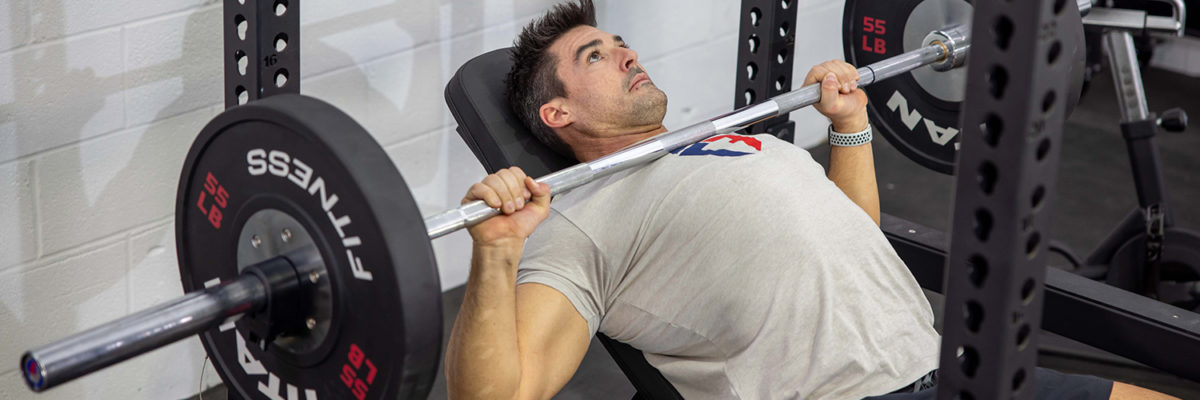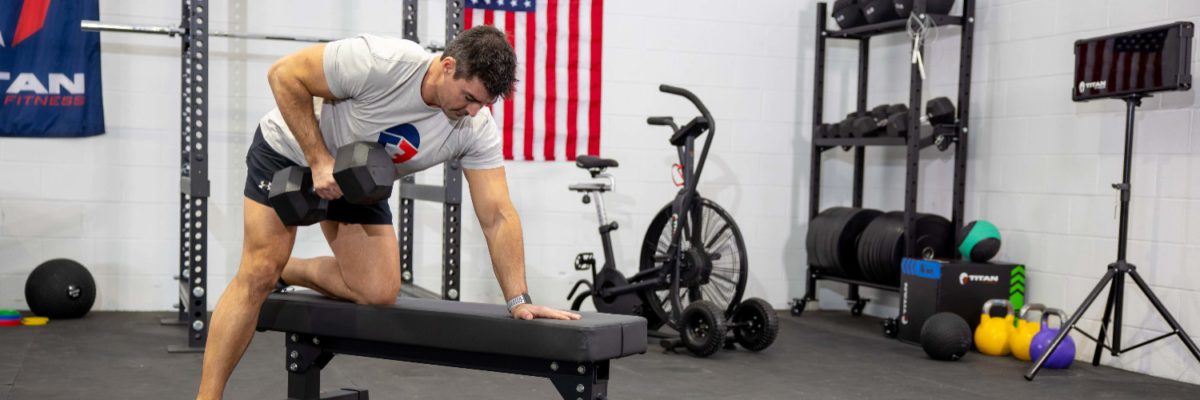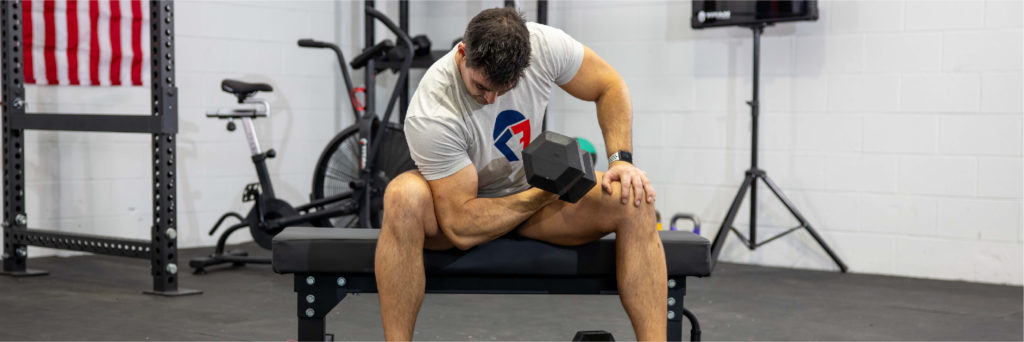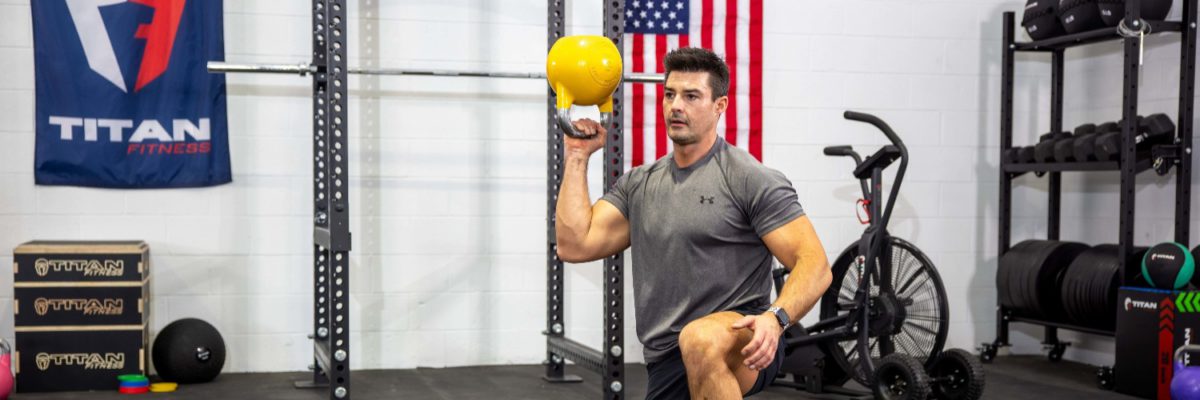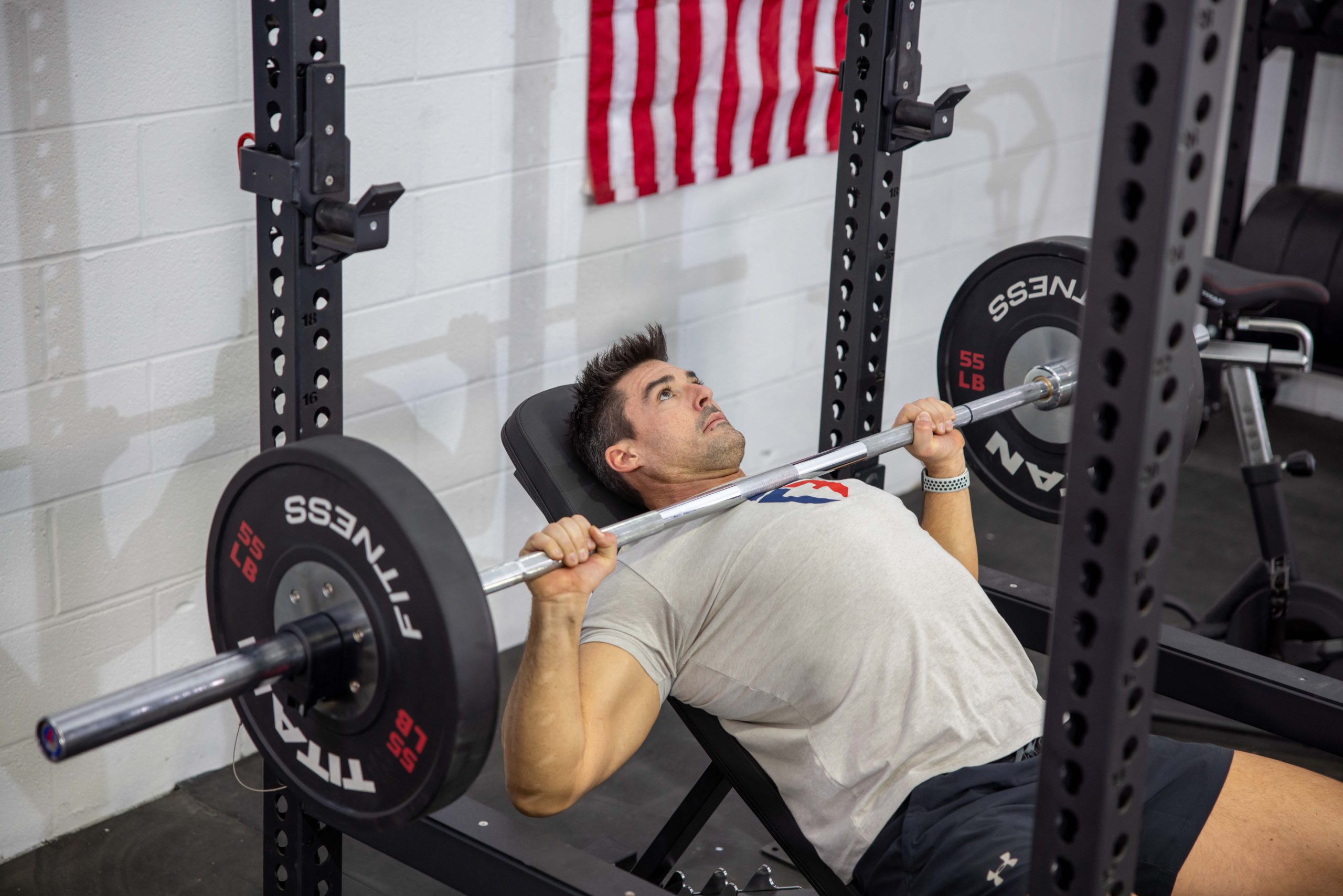
We all have our favorite day at the gym, but let’s be honest it’s hard to beat Chest Day! To many, the routine is simple: hop on a bench and lift heavy. But what is oftentimes overlooked is the all-important warm-up. Sure, you could slap on a few 45lbs plates to a barbell and do a quick set of 10, but is that really considered a warm-up? A warm-up benefits you not only by helping avoid injuries but is also a top way to improve your overall performance. Coach Chris Lane, a loyal Titan Fitness customer, and Certified Personal Trainer stopped by to talk about the benefits of warming up before you hit the bench.
An adequate warm-up should last 5-20 minutes and achieve the following:
- Elevated heart rate
- Increased respiratory rate
- Increased flexibility
- Stimulated CNS and neuromuscular systems
By priming ourselves for movement, our training becomes much more focused and efficient. An adequate warm-up also decreases risk for injury. For those of us still in a time crunch and ready to dive under the bar, here is a “quick and dirty” shoulder health, mobility, and bench activation sequence that will get you activated and ready to bench!
The Perfect Bench Warm Up:
Equipment Needed:
- Light Exercise Band
- Medicine Ball
- Barbell
- Workout Bench
The Warm-up:
Each exercise is performed at one set with the recommended rep count. Once you complete an exercise, jump immediately to the next.
- Up and overs | Reps: 10
- How to perform: Start by standing sideway to your bench so that it is positioned to your right, you are going to step up with your right leg and place it on the bench. You are then going to step up and bring your left leg on to the bench. Now that both feet are on the bench, you will step down to the right starting with your right leg and then follow with your left. You should now be positioned so that the bench is on your left. You will then repeat the process. This time you will start by stepping up with your left leg and placing it on the bench and then follow with your right. Once both feet are on the bench, you will step down to the left, starting with your left leg and then followed by your right. This is one rep. Continue until you have completed 10 reps on each side.
2. Halos Right & Left | Reps: 5 each side
- How to perform: Halos can be performed with a medicine ball, weight plate, dumbbell, or kettlebell. Do not choose a heavy weight, as this is meant to loosen up the muscles, not strain them. You will begin by standing straight with your shoulders relaxed. Hold your weight of choice in front of you. Lift the weight slightly above your shoulders in front of your face. Now take the weight and begin moving to the left, making a slow circle all the way around your head. Keep the weight close to your head throughout the circle but move slowly as to not bump your head throughout the movement. Once the weight has made a complete circle around your head, do the same movement in the reverse direction.
3. Internal Rotations | Reps: 10 each side
- How to perform: This exercise will be performed with either a light dumbbell or exercise band. If you are using an exercise band you MUST safely secure it to a stationary object that will not move when tension is applied to the band. Tuck your right elbow into your side. With your right hand, hold either the dumbbell or exercise band at waist height, in front of you. Tuck your right elbow into your side and at a slow, controlled speed, rotate your arm so that your right hand is now in front of your torso. Once you are in this position, slowly rotate the weight back out to the starting position. This is one rep. Repeat with both arms.
4. External Rotations | Reps: 10
- How to perform: This exercise is similar to the internal rotations, but this time instead of rotating your arm so that it ends up in front of your torso, we will be rotating it away from your body. This will be performed with either a light dumbbell or exercise band. If you are using an exercise band you MUST safely secure it to a stationary object that will not move when tension is applied to the band. Tuck your right elbow into your side. With your right hand, hold either the dumbbell or weight band at waist height, in front of you. Tuck your right elbow into your side and at a slow, controlled speed, rotate your arm so that your right hand and forearm are now perpendicular to your body. Once you are in this position, slowly rotate the weight back out to the starting position. This is one rep. Repeat with both arms.
5. Overhead Slams | Reps: 10
- How to perform: For this exercise, all you need is a medicine ball. Start by standing with your feet nearly shoulder-width apart. Grab your medicine ball with both hands and hold it over your head. With a slight bend in your knees, slam the medicine ball to the ground in front of you as hard as you can. Do not lean over the area that you slam the ball and be careful that the ball does not bounce back and hit you. Catch the ball on the bounce and repeat the motion, starting again with the ball over your head.
6. Chest Slams | Reps: 10
- How to perform: For this exercise, all you will need is a medicine ball. Start by standing with your feet shoulder-width apart and a slight bend in your knees. With both hands on either side of the medicine ball, pull the ball up to your chest with your fingers pointing away from your body. Hinge at the waist so that your upper body is almost parallel to the floor. Now push the ball away from your body to the floor, as if you were doing a chest pass in basketball. Once the ball bounces back, catch it and do it again. Be careful not to let the ball bounce back and hit you. Choose a pace that you are comfortable with.
7. Barbell Pushup | Reps: 10
- How to perform: Take your barbell and place it on the floor. If you have any 5 to 10 lbs. weight plates, place one on each side of the bar. Start by grabbing the bar with both hands, roughly shoulder width apart. Get into normal push up position, while still holding on to the bar, and perform a push up. Be careful to keep the barbell stable, as it will want to roll away during the push phase. Keeping the barbell under your shoulders adds additional core resistance.
8. Lat Stretch | 20 seconds
- How to perform: For this exercise, you will need either a bench, chair, or exercise ball for support. Start by getting down on all fours and placing your support item in front of you. Fully extend both your right and left arm and place both of your hands on top of your support item. The outside of your hands should be resting on the support item with your thumbs facing the ceiling. Slowly begin pressing your chest towards the ground, as if you were trying to touch the ground with your chest. Hold for 20 seconds and then slowly pull yourself back up.
Now that you have completed your warm-up it’s time to tackle chest day. Always remember to lift with controlled movements and ask for a spotter whenever you are lifting weights over your body.

For more fitness tips follow @coachchrislane on Instagram. #BeTitanFit
